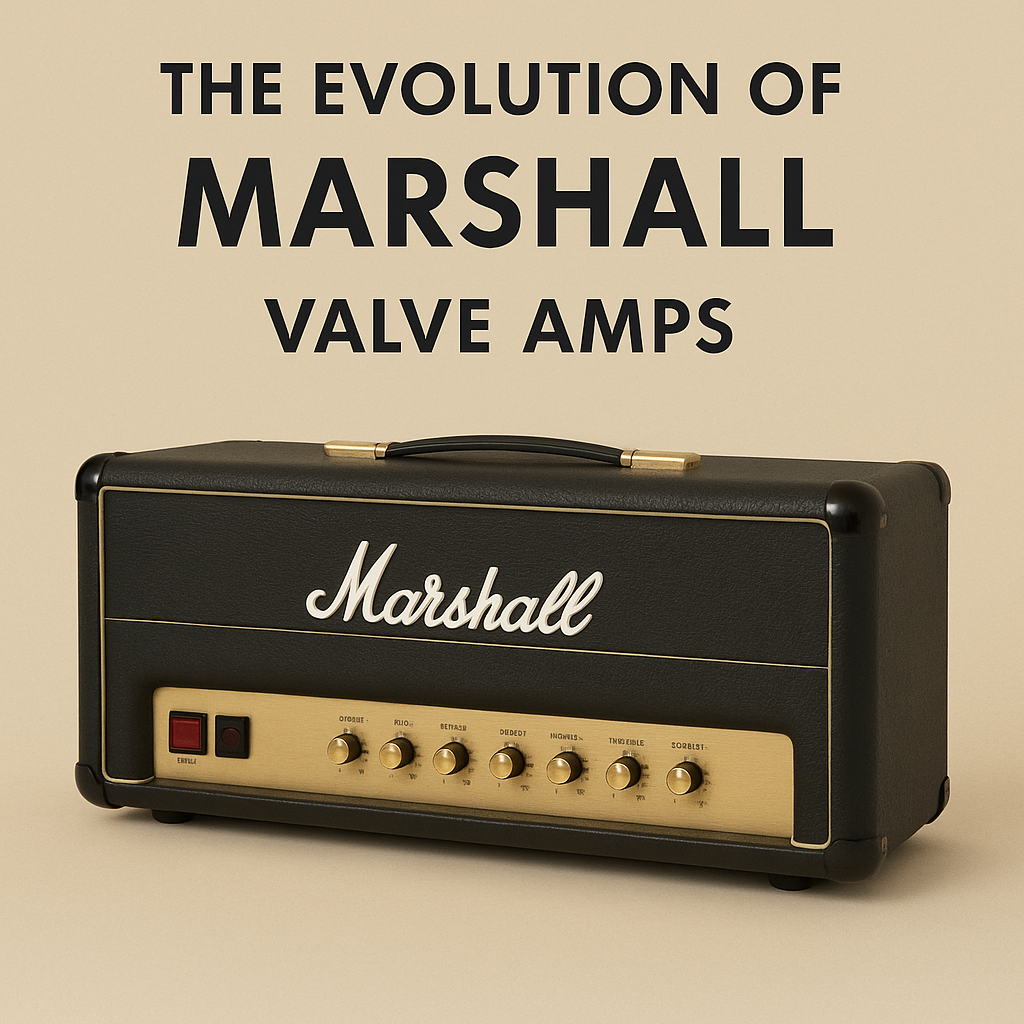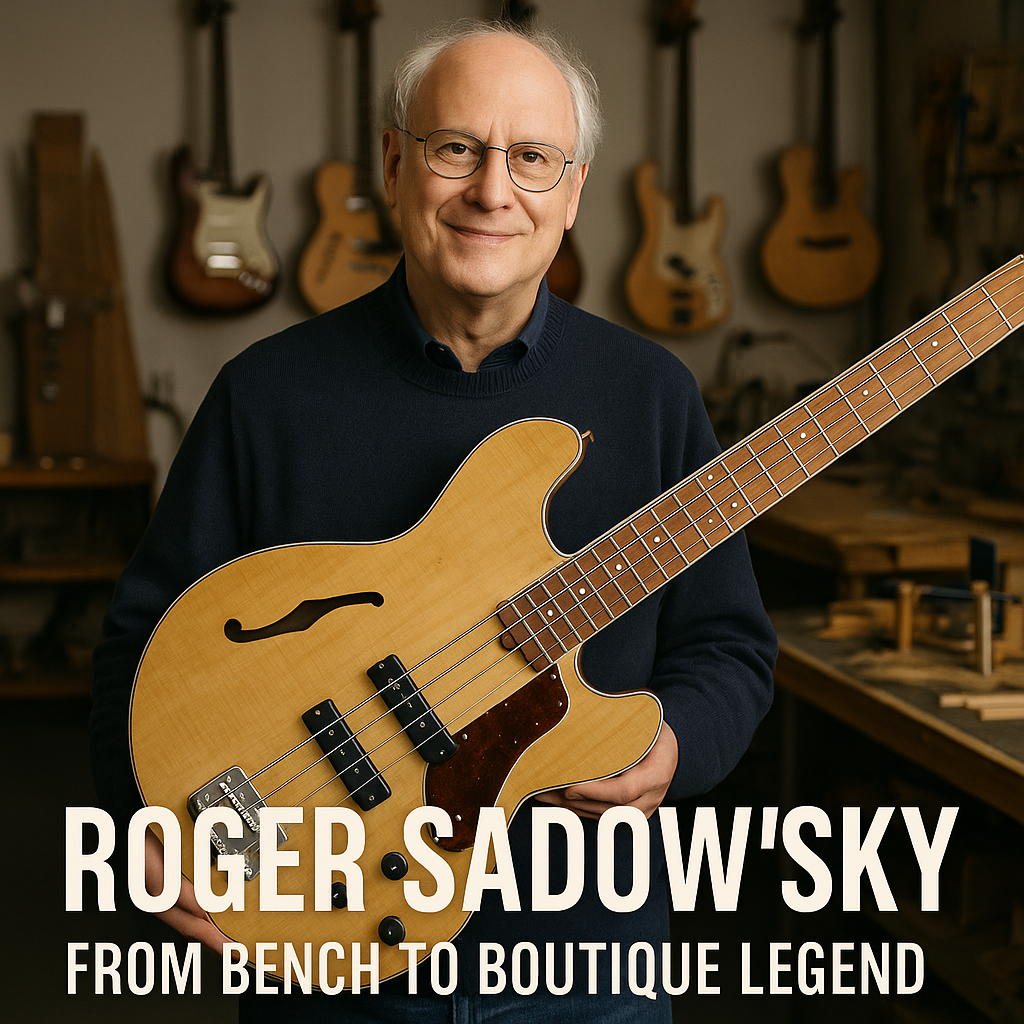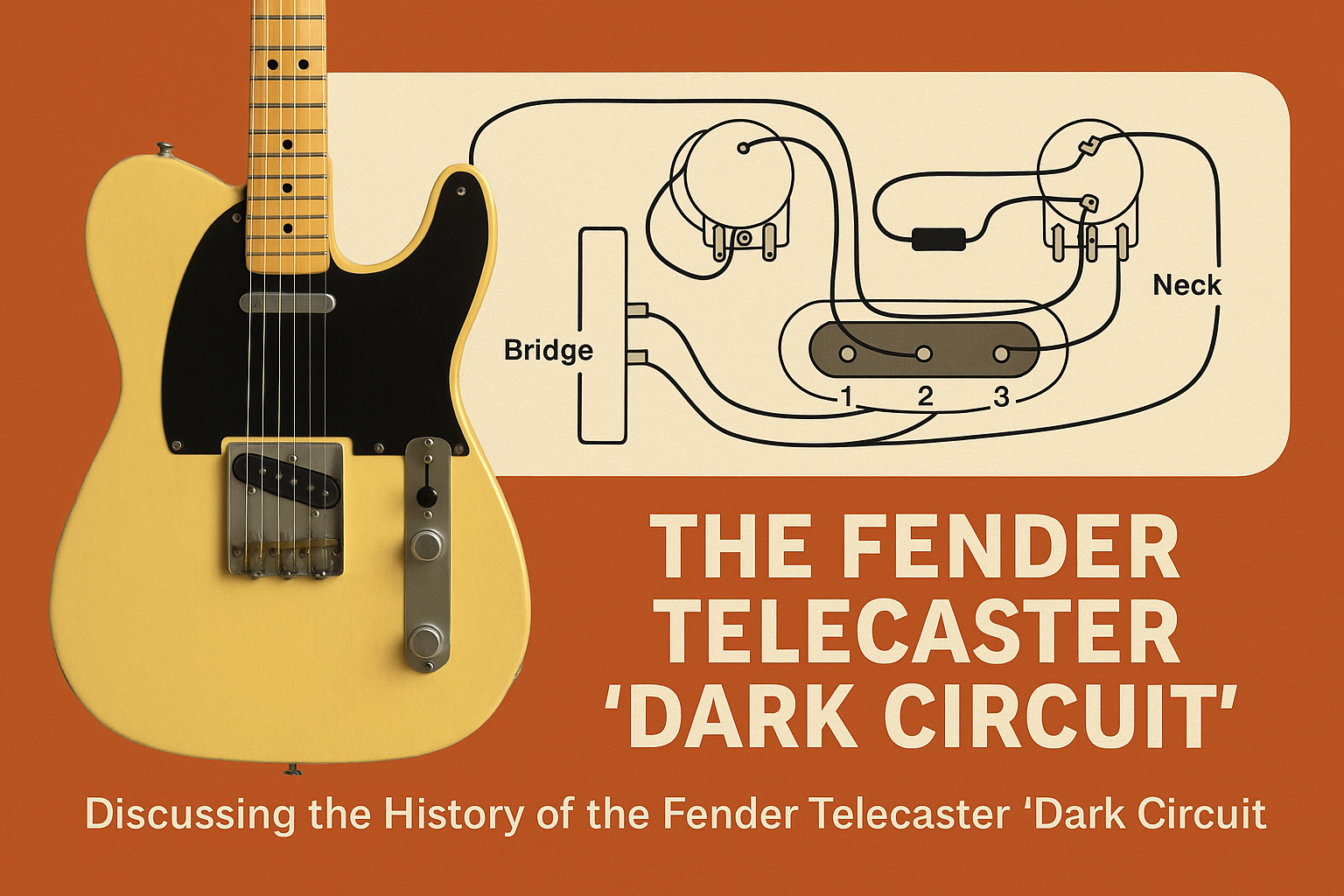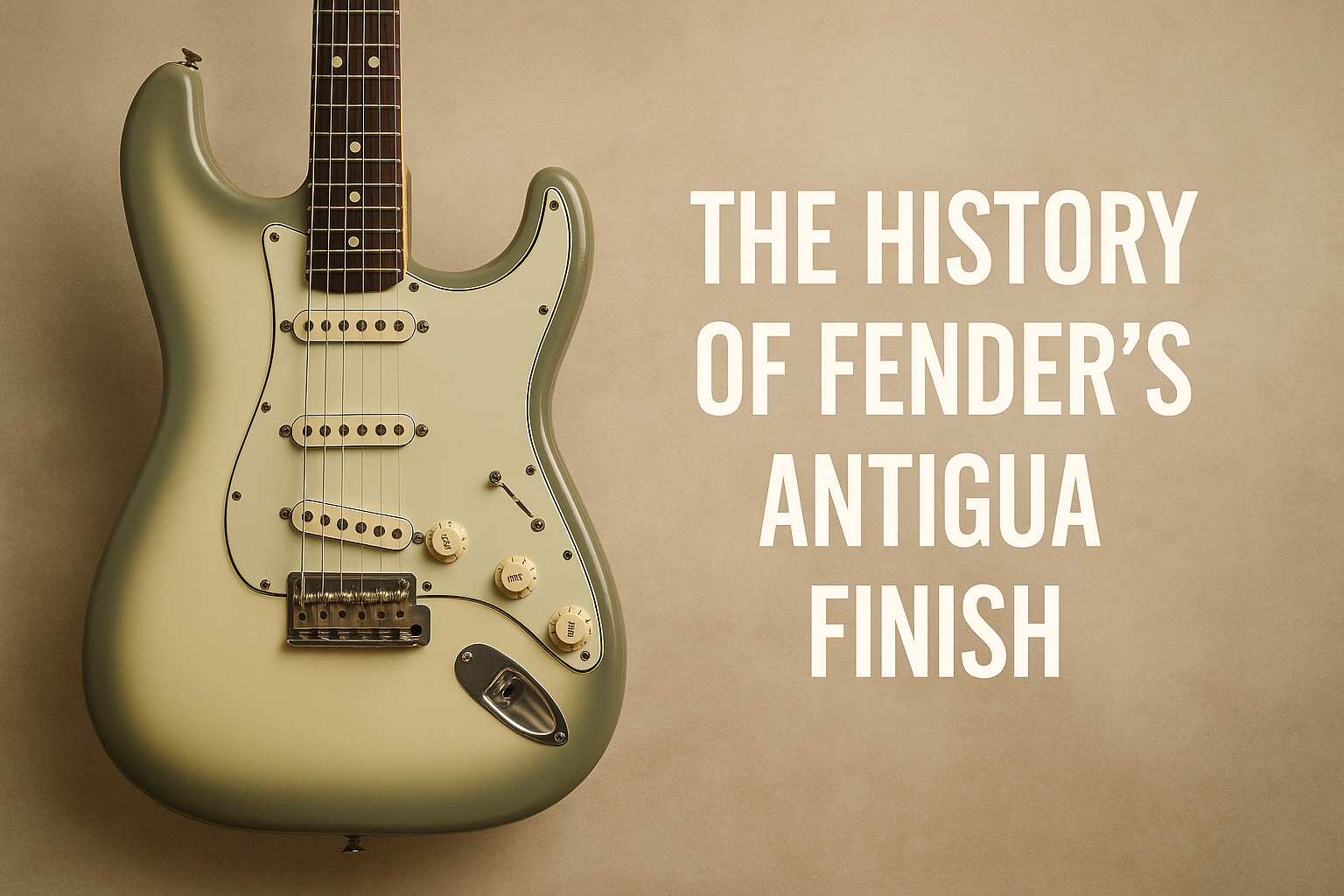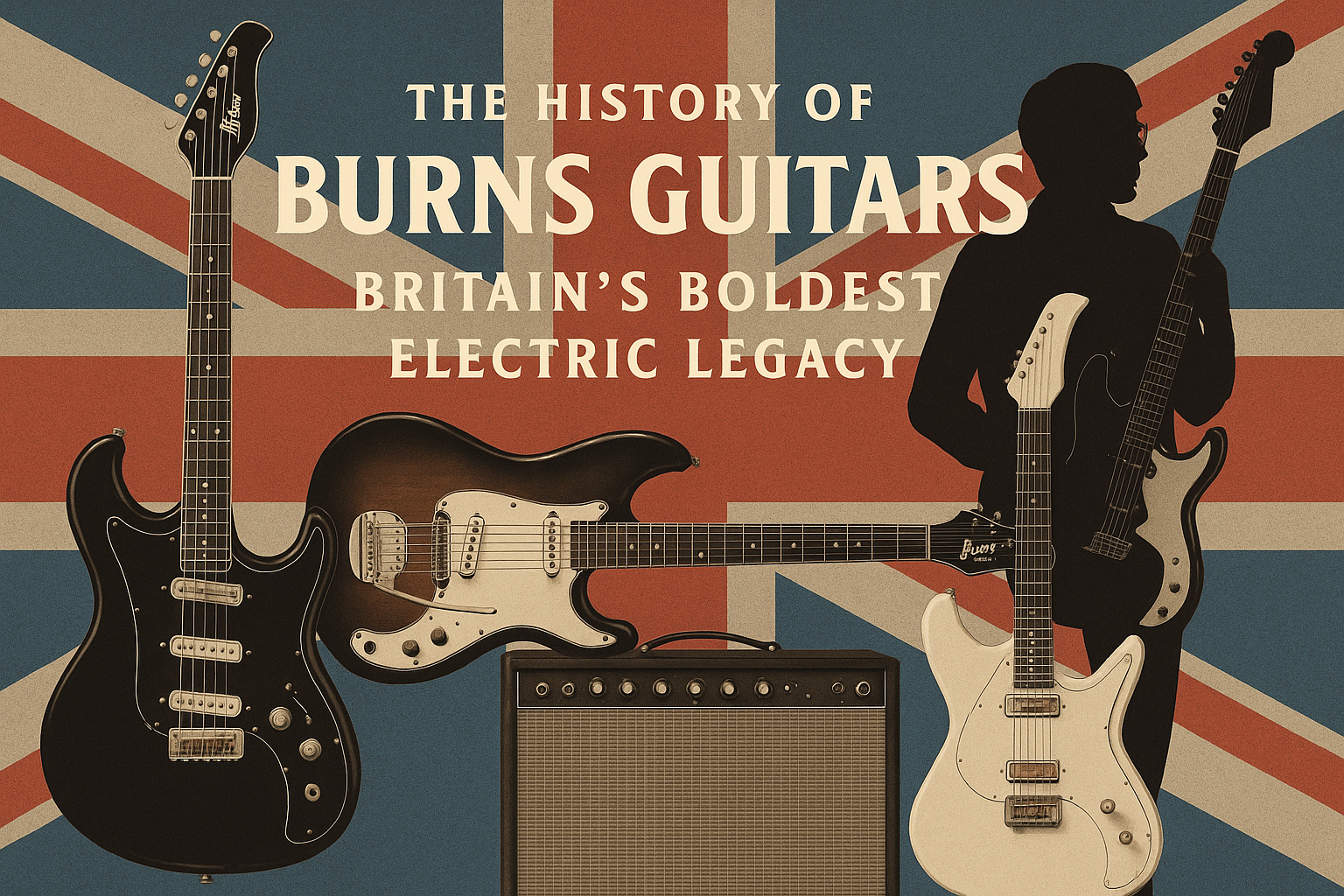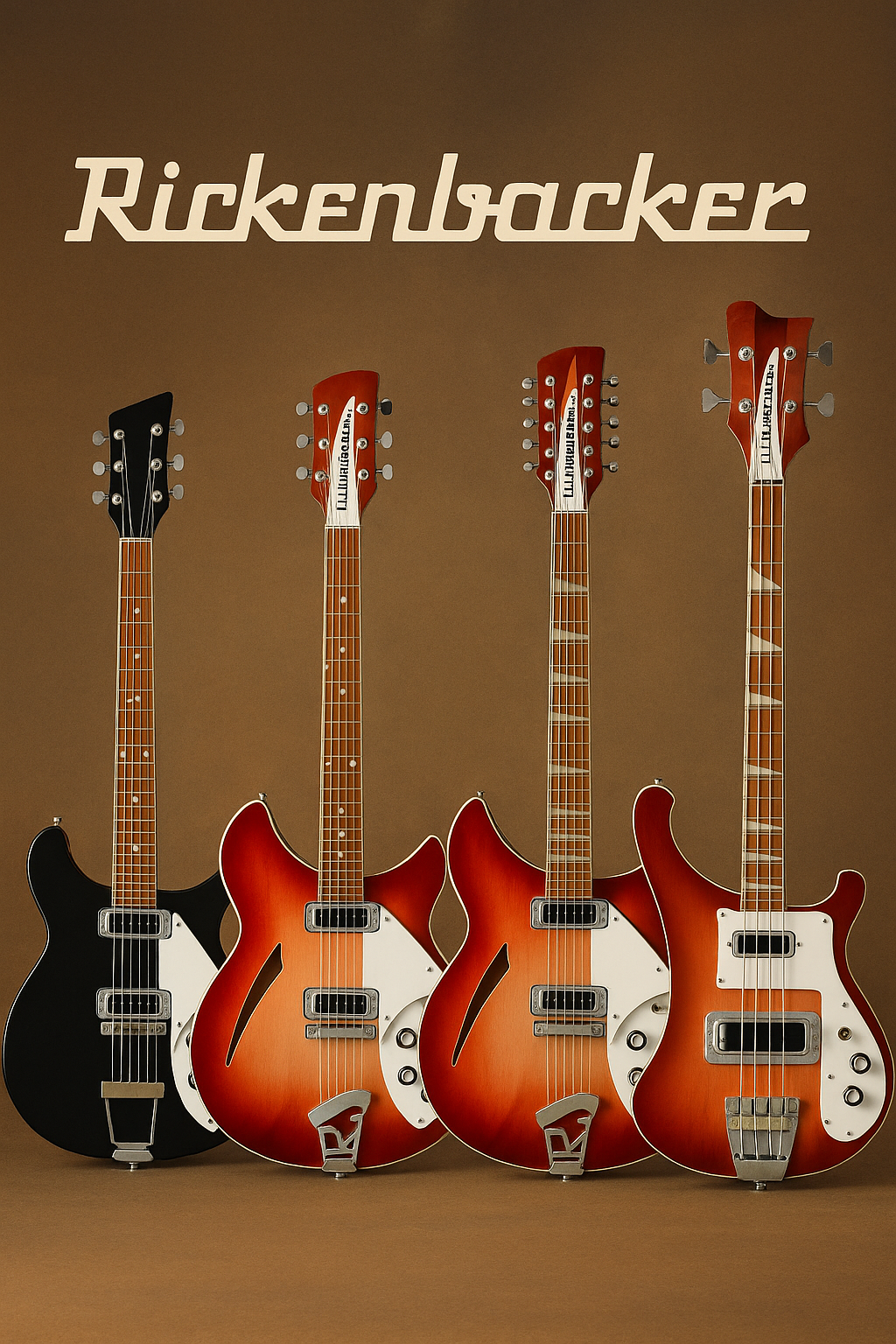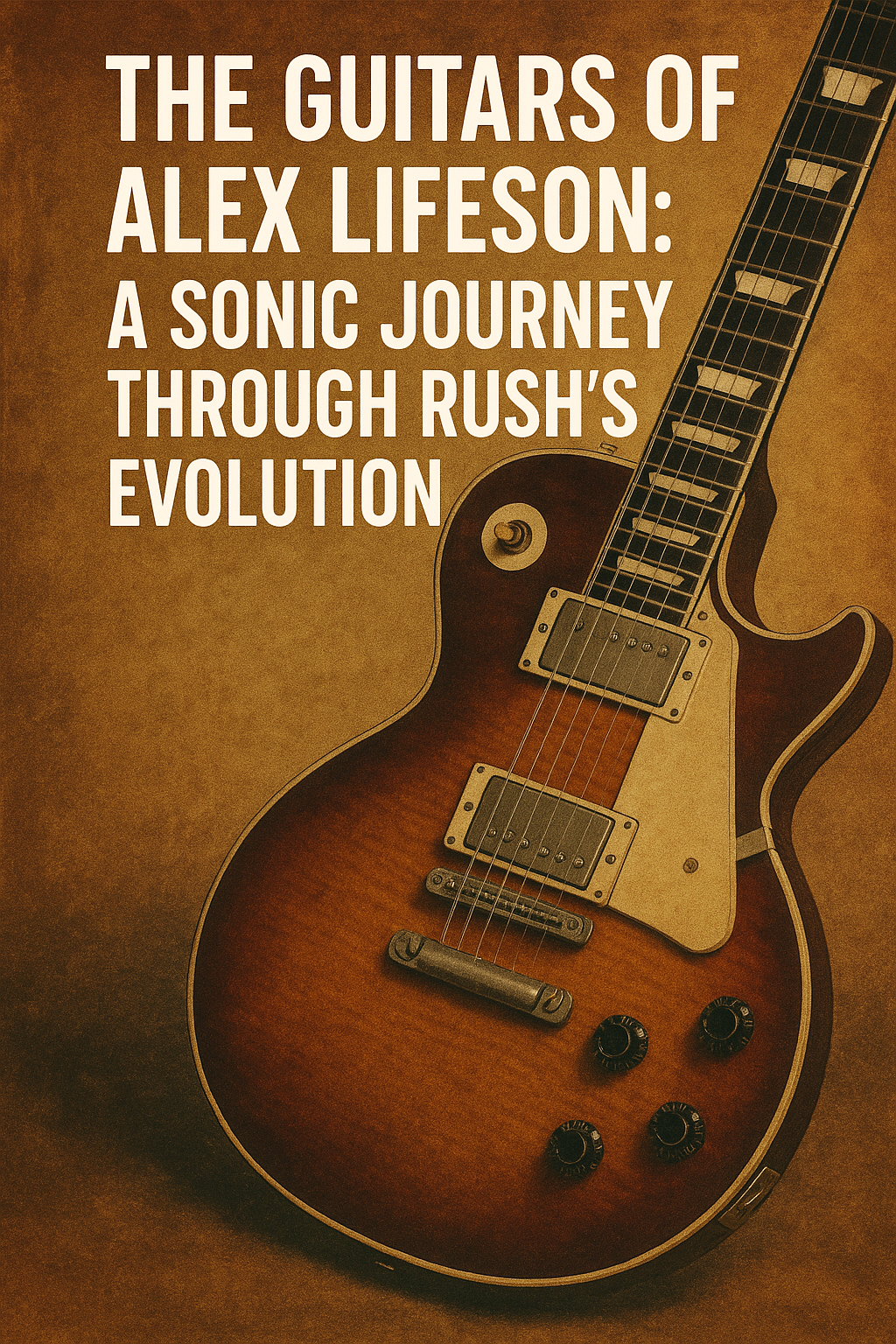Few names in the world of guitar amplification carry the same legendary weight as Marshall. Since the early 1960s, Marshall valve (tube) amps have defined the sound of rock and metal with their raw power, unmistakable midrange punch, and stage-dominating presence. Let’s take a journey through the evolution of these iconic amps and the players who made them famous.
The Birth of a Legend: The JTM45 (1962–1966)
The Marshall story begins in 1962, when Jim Marshall, a drum teacher and music shop owner in London, responded to local guitarists’ desire for a new sound. Alongside Ken Bran and Dudley Craven, he developed the JTM45, an amp inspired by the Fender Bassman but with distinct British character.
-
Tone Profile: Warm, smooth, and bluesy with a rounded breakup.
-
Famous Users: Eric Clapton used a modified JTM45 in the “Bluesbreaker” combo form on the iconic John Mayall & the Bluesbreakers album — earning it the nickname “Bluesbreaker amp.”
The Plexi Era: Super Lead 1959 (1965–1969)
As rock got louder, so did Marshall. By the mid-60s, the Super Lead 1959, also known as the “Plexi”, became the amp of choice for stadium-filling acts.
-
Tone Profile: Aggressive, bright, and loud with pronounced mids and dynamic responsiveness.
-
Notable Tech: Named after its plexiglass front panel, these amps ran at 100 watts and were often paired with 4x12 cabinets.
-
Famous Users:
-
Jimi Hendrix, who pushed Plexis to their limits with fuzz and wah.
-
Jimmy Page, who used them with Led Zeppelin.
-
Pete Townshend, who helped influence Marshall’s move toward higher wattage.
-
The Master Volume Revolution: JMP and JCM800 (1975–1989)
By the late ’70s, players wanted high-gain tones at more manageable volumes. Enter the JMP Master Volume series and the legendary JCM800.
-
Tone Profile: Tighter low end, more focused gain, and the ability to achieve distortion without insane volume levels.
-
JCM800 2203/2204: Became a benchmark for hard rock and early metal tones.
-
Famous Users:
-
Slash (Guns N’ Roses) used a modded JCM800 for Appetite for Destruction.
-
Kerry King (Slayer) favored JCM800s for their brutal attack.
-
Zakk Wylde and many ‘80s metal guitarists shaped their tones with this series.
-
High-Gain Territory: JCM900 and DSL/TSL Series (1990s–2000s)
The ’90s brought the JCM900, with even more gain and diode clipping — a controversial move among purists but embraced by many grunge and alt-rock players.
-
Tone Profile: Higher gain, more compression, and modern voicing.
-
DSL (Dual Super Lead) & TSL (Triple Super Lead): Introduced in the late ’90s/early 2000s, offering multiple channels and greater flexibility.
-
Famous Users:
-
Tom Morello (Rage Against the Machine) used a JCM800 but the DSL and JCM900 became popular with bands like Foo Fighters and Green Day.
-
Modern Muscle: JVM Series and Signature Models (2007–Present)
Marshall’s JVM Series (Joe Satriani’s JVM410JS) ushered in a new era of multi-channel versatility and MIDI control without sacrificing tube warmth.
-
Tone Profile: Capable of everything from clean to brutal high gain.
-
Famous Users:
-
Joe Satriani, with his signature JVM410JS.
-
Yngwie Malmsteen has a signature YJM100, a modernised Plexi with added features like reverb and noise gate.
-
Digital Meets Valve: Marshall CODE and Studio Series
In recent years, Marshall has embraced modern tech with the CODE series — digital modeling amps — while also catering to purists with the Studio Series (mini versions of classic amps like the JCM800 and Plexi).
-
Studio Series: Ideal for players who want vintage tone at home or in small venues.
-
CODE: Offers a wide range of modelled Marshall tones and effects.
Conclusion: A Legacy That Roars On
From the smoky clubs of London to the world’s biggest stages, Marshall valve amps have shaped the soundtrack of generations. Whether it’s the creamy breakup of a JTM45 or the searing aggression of a JCM800, there’s a Marshall tone for every kind of player.
As technology evolves, Marshall continues to blend innovation with its storied heritage — proving that the roar of a great valve amp will never go out of style.

